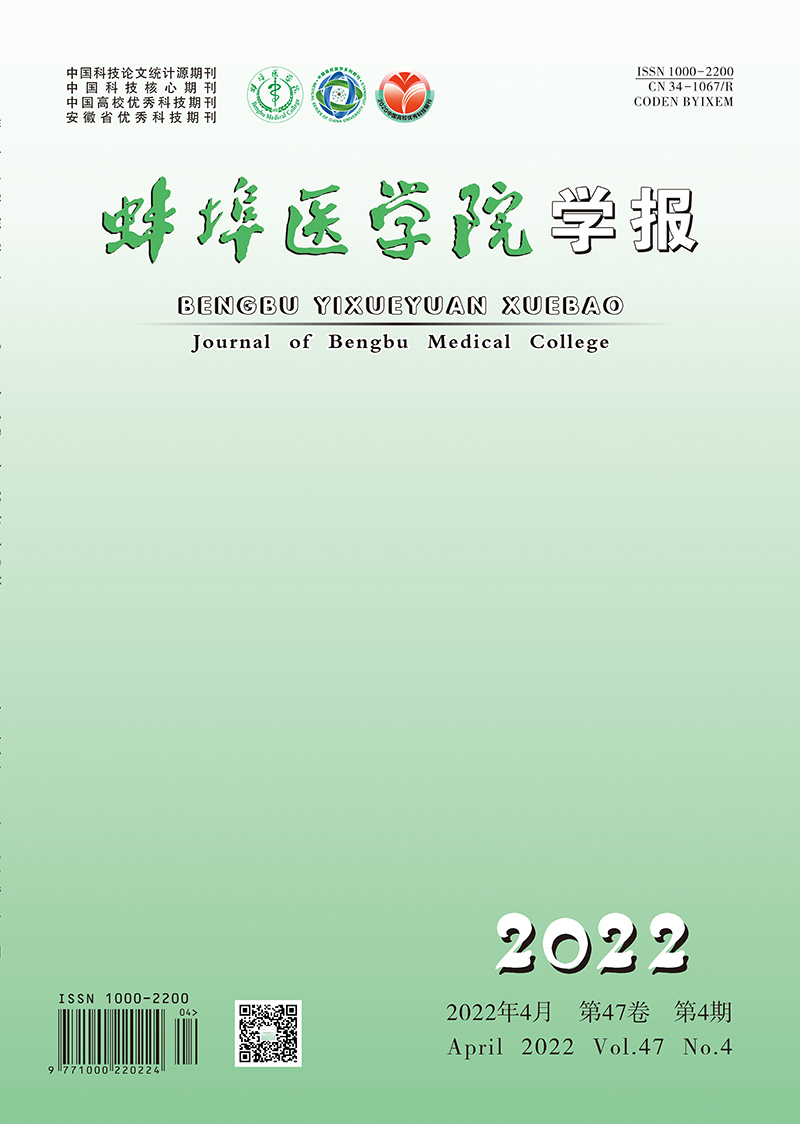-
目前宫颈癌发病率居于女性恶性肿瘤第2位,且发病病人呈增多趋势[1]。根治术对初期宫颈癌病人治愈率较高[2]。宫颈癌根治术创伤大、手术时间长,可引发强烈应激反应,而过度应激反应可引起血流动力学波动及免疫抑制[3]。右美托咪定具有镇静、镇痛与抗焦虑功能,研究[4]证实,其用于全麻辅助用药利于维持循环稳定。氯胺酮是非选择性N-甲基-D天门冬氨酸(NMDA)受体阻断剂,具有抗异常疼痛、抗疼痛过敏作用[5]。术后疲劳是机体对手术创伤的应激反应,主要表现为情绪抑郁、疼痛不适、免疫功能低下等,影响病人术后康复[6]。本研究旨在分析低剂量氯胺酮配合右美托咪定对宫颈癌根治术病人术后疲劳程度及疼痛介质、免疫功能状态的影响。现作报道。
HTML
-
选取2017年2月至2020年4月我院接受宫颈癌根治术病人150例,以简单随机化法分为观察组和对照组,各75例。2组年龄、体质量指数(BMI)、肿瘤分期、美国麻醉医师协会(ASA)分级、肿瘤直径、分化程度、文化程度等比较,差异均无统计学意义(P>0.05),具有可比性(见表 1)。本研究经我院伦理委员会审批通过。
项目 对照组
(n=75)观察组
(n=75)χ2 P 年龄(x±s)/岁 52.41±4.63 53.15±5.08 0.93* >0.05 BMI(x±s)/(kg/m2) 23.09±2.17 23.24±2.35 0.40* >0.05 肿瘤分期 ⅠB期 33(44.00) 31(41.33) ⅡA期 38(50.67) 41(54.67) 0.19 >0.05 ⅡB期 4(5.33) 3(4.00) ASA分级 Ⅰ级 41(54.67) 43(57.33) 0.11 >0.05 Ⅱ级 34(45.33) 32(42.67) 病理类型 鳞癌 66(88.00) 67(89.33) 0.07 >0.05 腺癌 9(12.00) 8(10.67) 肿瘤直径/cm < 4 36(48.00) 35(46.67) 0.03 >0.05 < 4 39(52.00) 40(53.33) 分化程度 低分化 17(22.67) 16(21.33) 中分化 38(50.67) 40(53.33) 0.11 >0.05 高分化 20(26.67) 19(25.33) 文化程度 小学及以下 25(33.33) 24(32.00) 中学 31(41.33) 33(44.00) 0.11 >0.05 大专及以上 19(25.33) 18(24.00) *示t值 -
纳入标准:(1)均符合欧洲肿瘤内科学会诊断标准[7],并经病理学检查确诊;(2)ASA分级Ⅰ~Ⅱ级;(3)术前评估肝、肾功能正常;(4)卡氏评分>60分;(5)未进行术前化疗或放疗;(6)病人及家属知情并签署知情承诺书。排除标准:(1)合并其他恶性肿瘤;(2)术前有精神异常;(3)长期或近期服用镇痛剂、镇静剂、精神类药物等;(4)严重电解质紊乱、活动性结核;(5)感染发热、自身免疫性疾病及内分泌、代谢性疾病;(6)酗酒、吸毒;(7)贫血或严重低蛋白血症者。
-
所有病人术前禁食8 h,禁饮4 h,入室后连接心电监护并建立静脉通路,对照组麻醉诱导前静脉推注右美托咪定(江苏恒瑞医药股份有限公司,国药准字H20130093)0.5 μg/kg,而后以0.5 μg·kg-1·h-1输注至术毕前0.5 h;观察组在对照组基础上另于麻醉诱导前静脉推注氯胺酮(石药银湖制药有限公司,国药准字H14020754)0.5 mg/kg。30 min后行麻醉诱导,诱导方案:瑞芬太尼2 μg/kg,丙泊酚2.5 mg/kg,顺式阿曲库铵0.15 mg/kg。意识完全消失后经口置入7~7.5号气管插管进行通气,通气频率12~14次/分钟,潮气量6~8 mL/kg,吸入纯氧,氧流量2 L/min,吸呼比1∶2,维持呼气末二氧化碳分压35~45 mmHg。麻醉维持:丙泊酚4~8 mg·kg-1·h-1,瑞芬太尼0.1~0.3 μg·kg-1·h-1,麻醉深度维持以术中血压、心率(HR)波动于基础值±20%,生命体征稳定为标准;据手术操作步骤适时追加顺式阿曲库铵。术中适当使用血管活性药物控制血压和HR变化在基础值上下20%以内。
-
抽取外周静脉血5 mL,离心(半径8 cm,3 500 r/min,9 min),取血清,5-羟色胺(5-HT)、P物质(SP)、列腺素E2(PGE2)以放射免疫法检测,试剂盒购自于法国Lunginnovl公司;免疫功能指标(CD3+、CD4+、CD4+/CD8+)以美国Beckman-Coulter公司EPIC流式细胞仪测定。
-
(1) 术中一般情况,包括手术时间、术中出血量及术中补液量。(2)血流动力学指标:术前(T0)、切皮时(T1)、术中1 h时(T2)、术毕时(T3)平均动脉压(MAP)、HR。(3)血清疼痛介质:T0、T3、术后24 h(T4)、术后48 h(T5)5-HT、SP、PGE2水平。(4)免疫功能指标:T0、T3、T4、T5时CD3+、CD4+、CD4+/CD8+。(5)视觉模拟量表(VAS)评分:T4、T5时VAS评分,总分范围0~10分,评分越高,疼痛越严重。(6)疲劳量表-14(FS-14)及简易智能精神状态检查量表(MMSE)评分:T0、术后3 d、7 d FS-14、MMSE评分。FS-14总分共14分,分值越高,疲劳越严重,总分≥4分时认为发生疲劳;MMSE总分范围为0~30分,分值越高,认知功能越好。(7)麻醉不良反应,包括头晕头痛、恶心呕吐、低血压、心动过缓。
-
采用χ2检验和t检验。
1.1. 一般资料
1.2. 纳入及排除标准
1.3. 方法
1.3.1. 麻醉方法
1.3.2. 检测方法
1.4. 观察指标
1.5. 统计学方法
-
2组手术时间、术中出血量、术中补液量差异均有统计学意义(P>0.05)(见表 2)。
分组 n 手术时间/min 术中出血量/mL 术中补液量/mL 观察组 75 206.83±29.61 475.63±58.48 2 675.49±328.51 对照组 75 211.54±32.07 491.52±62.04 2 726.58±361.72 t — 0.94 1.61 0.91 P — >0.05 >0.05 >0.05 -
2组T0时MAP、HR水平差异均无统计学意义(P>0.05);2组T1、T2、T3时MAP、HR水平均较T0时增高,且观察组均低于对照组(P < 0.05~P < 0.01)(见表 3)。
分组 n T0 T1 T2 T3 F P MS组内 MAP/mmHg 观察组 75 83.14±7.27 85.92±7.68* 86.74±6.70* 85.46±6.25* 6.64 < 0.05 48.972 对照组 75 83.47±6.61 88.49±8.05* 90.51±7.32* 87.79±7.06* 12.43 < 0.01 52.981 t — 0.29 2.00 3.28 2.14 — — — P — >0.05 < 0.05 < 0.01 < 0.05 — — HR/(次/分) 观察组 75 70.86±8.15 74.07±8.03* 74.39±8.43* 73.41±7.28* 3.02 < 0.05 63.742 对照组 75 71.53±7.69 77.21±9.26* 77.85±8.95* 75.92±7.73* 8.54 < 0.01 71.185 t — 0.52 2.22 2.44 2.05 — — — P — >0.05 < 0.05 < 0.05 < 0.05 — — — t检验:与本组T0时间点比较*P < 0.05 -
2组T0时血清5-HT、SP、PGE2水平差异均无统计学意义(P>0.05);2组T3、T4、T5时血清5-HT、SP、PGE2水平较T0时增高,且观察组均低于对照组(P < 0.05~P < 0.01)(见表 4)。
分组 n T0 T3 T4 T5 F P MS组内 5-HT/(pg/mL) 观察组 75 162.81±26.75 192.47±29.39* 209.02±31.84* 262.58±28.40* 154.63 < 0.01 849.820 对照组 75 165.43±23.68 215.28±34.51* 261.97±38.69* 317.23±32.61* 292.66 < 0.01 1 078.003 t — 0.64 4.36 9.1526 10.95 — — — P — >0.05 < 0.01 < 0.01 < 0.01 — — — SP/(ng/L) 观察组 75 257.25±36.12 276.42±39.30* 297.04±41.57* 349.85±45.46* 71.99 < 0.01 1 660.955 对照组 75 263.28±35.09 319.37±42.52* 346.35±48.74* 396.89±52.50* 113.79 < 0.01 2 042.774 t — 1.04 6.42 6.67 5.87 — — — P — >0.05 < 0.01 < 0.01 < 0.01 — — — PGE2/(pg/mL) 观察组 75 246.07±34.46 261.74±37.62* 286.53±42.57* 37.95±46.24* 123.32 < 0.01 1 638.275 对照组 75 250.69±36.20 286.37±44.93* 319.16±47.28* 386.62±51.85* 121.52 < 0.01 2 063.242 t — 0.80 3.64 4.44 6.07 — — — P — >0.05 < 0.01 < 0.01 < 0.01 — — — t检验: 与本组T0时间点比较*P < 0.05 -
2组T0时血清CD3+、CD4+、CD4+/CD8+差异均无统计学意义(P>0.05);2组T3、T4、T5时血清CD3+、CD4+、CD4+/CD8+水平较T0时降低,且观察组均高于对照组(P < 0.05~P < 0.01)(见表 5)。
分组 n T0 T3 T4 T5 F P MS组内 CD3+/% 观察组 75 69.53±7.85 64.22±5.47* 58.23±5.09* 63.71±6.62* 38.65 < 0.01 157.488 对照组 75 70.16±8.07 59.84±6.16* 51.87±5.94* 57.68±6.30* 102.45 < 0.01 213.571 t — 0.49 4.60 7.04 5.71 — — — P — >0.05 < 0.01 < 0.01 < 0.01 — — — CD4+/% 观察组 75 37.92±4.45 34.70±3.18* 25.84±2.57* 29.76±3.05* 186.93 < 0.01 324.881 对照组 75 38.23±4.68 32.16±2.74* 22.81±2.38* 27.04±2.92* 257.63 < 0.01 864.572 t — 0.42 5.24 7.49 5.58 — — — P — >0.05 < 0.01 < 0.01 < 0.01 — — — CD4+/CD8+ 观察组 75 1.33±0.18 1.26±0.14* 1.05±0.11* 1.17±0.16* 54.27 < 0.01 71.489 对照组 75 1.31±0.15 1.19±0.12* 0.89±0.09* 1.02±0.13* 82.63 < 0.01 92.462 t — 0.74 3.29 9.75 6.30 — — — P — >0.05 0.01 < 0.01 < 0.01 — — — t检验:与本组T0时间点比较*P < 0.05 -
观察组T4、T5时VAS评分均明显低于对照组(P < 0.01)(见表 6)。
分组 n T4 T5 观察组 75 1.62±0.39 0.80±0.17 对照组 75 2.36±0.50 1.57±0.25 t — 10.11* 22.06 P — < 0.01 < 0.01 *示t′值 -
2组T0时FS-14、MMSE评分差异均无统计学意义(P>0.05);2组术后3 d、术后7 d的FS-14较T0时增高,且观察组均低于对照组,MMSE评分较T0时下降,且观察组均高于对照组(P < 0.05~P < 0.01)(见表 7)。
分组 n T0 术后3 d 术后7 d F P MS组内 FS-14评分 观察组 75 2.04±0.62 3.96±1.03* 2.96±0.82* 49.64 < 0.01 61.558 对照组 75 2.12±0.57 5.27±1.28* 3.39±1.07* 63.77 < 0.01 80.647 t — 0.82 6.10 2.76 — — — P — >0.05 < 0.01 < 0.01 — — — MMSE评分 观察组 75 28.04±0.92 26.08±0.72* 26.94±0.85* 71.39 < 0.01 86.972 对照组 75 27.98±0.86 24.79±0.64* 25.81±0.73* 86.56 < 0.01 112.375 t — 0.41 11.60 8.73 — — — P — >0.05 < 0.01 < 0.01 — — — t检验:与本组T0时间点比较*P < 0.05 -
2组麻醉不良反应发生率间差异无统计学意义(P>0.05)(见表 8)。
分组 n 头晕头痛 恶心呕吐 低血压 心动过缓 总发生 χ2 P 观察组 75 4(5.33) 6(8.00) 2(2.67) 3(4.00) 15(20.00) 对照组 75 3(4.00) 4(5.33) 2(2.67) 2(2.67) 11(14.67) 0.74 >0.05 合计 150 7(4.67) 10(6.67) 4(2.67) 5(3.33) 26(17.33)
2.1. 术中一般情况
2.2. 血流动力学指标
2.3. 血清疼痛介质
2.4. 免疫功能
2.5. VAS评分
2.6. FS-14及MMSE评分
2.7. 麻醉不良反应
-
目前,临床治疗宫颈癌仍以手术为主,但术中应激反应可加重已有免疫抑制,并导致中枢、外周神经敏感化,导致病人疼痛剧烈,影响术后恢复[8]。因此,选择合适的麻醉方案,预防应激病理性反应,以减轻免疫抑制,改善镇痛效果,成为临床研究热点。
右美托咪定通过作用于蓝斑核和脊髓的α2肾上腺素能受体,发挥镇静、抗焦虑作用,且无明显呼吸抑制,并激动突触前膜α2肾上腺素能受体,对去甲肾上腺素释放及神经元兴奋起到抑制作用,发挥镇痛作用[9-10]。研究[11]证实,右美托咪定作为全麻辅助用药,可减轻围手术期应激反应及术后疼痛。氯胺酮是非竞争性NMDA受体拮抗剂,可抑制单胺类神经递质再摄取,强化中枢疼痛下行抑制系统,并可阻碍外周伤害性冲动传入,同时,可抑制内质网中钙离子释放与受体诱导的钙离子内流,使细胞内环磷酸腺苷浓度增加,抑制前炎性细胞因子过多生成,进而减弱外周伤害性刺激产生[12]。麻醉及手术等机械刺激会激活下丘脑-垂体-肾上腺皮质,引起肾上腺素和去甲肾上腺素升高,表现为MAP、HR改变[13]。本研究数据显示,低剂量氯胺酮配合右美托咪定应用于宫颈癌根治术病人,利于维持血流动力学稳定,提示二者联合可保护机体循环系统,考虑与中枢镇静镇痛及交感抑制有关。高锦文等[14]研究显示,小剂量氯胺酮联合右美托咪定用于宫颈癌全麻手术病人,可减轻苏醒期应激反应以术后疼痛反应。但二者联合镇痛机制及对术后疲劳、免疫功能状态的影响尚无定论。
目前,疼痛发生机制尚未明确。研究[15]认为,伤害性刺激引起疼痛反应与5-HT、SP、PGE2等多种疼痛介质分泌有关。5-HT是作用于外周伤害感受器的疼痛介质,可诱导痛觉信号传递至大脑皮层中枢;SP可介导痛觉信号传导,并释放组胺、缓激肽等致痛物质;PGE2可直接刺激神经末梢,引起痛觉过敏,又可促进SP释放[16]。本研究数据显示,2组T3、T4、T5时血清5-HT、SP、PGE2水平均增高,说明麻醉与手术刺激所致应激反应可引起明显疼痛反应,刺激相关疼痛介质的表达,而观察组变化幅度更小,提示右美托咪定联合氯胺酮更能有效镇痛。可能与其作用机制不同,协同减轻中枢及外周敏感化,调节疼痛介质表达,减少单一药物的不足,从而发挥满意的镇痛效果。同时,观察组T4、T5时VAS评分均低于对照组(P < 0.05)。进一步证实其镇痛疗效。
免疫逃逸是恶性肿瘤发生、发展的重要因素,而手术应激、术后疼痛可使免疫逃逸进一步加重[17]。研究[18]发现,在缺乏手术刺激的情况下,全麻对机体免疫功能的影响轻微,且是一过性。因此,手术应激是引起围手术期免疫抑制的主要因素。T淋巴细胞是抗肿瘤免疫关键细胞。CD4+辅助并激活其他细胞参与免疫应答;CD3+表示细胞总体免疫水平;CD4+/CD8+是反映免疫平衡。本研究数据显示,观察组T3、T4、T5时血清CD3+、CD+、CD+/CD8+水平高于对照组(P < 0.01)。分析认为,低剂量氯胺酮配合右美托咪定除了抑制病人应激反应外,也增强镇痛效果,进而改善术后抗肿瘤免疫应答。
术后疲劳是手术常见并发症,可加剧病人急性炎症反应,抑制机体免疫功能,导致术后康复进程缓慢,甚至引发严重不良事件。研究[19]显示,术后疲劳大鼠海马NMDA受体显著增加,而下调NMDA受体可明显缓解术后疲劳程度。也有研究[20]发现,术后疲劳发生与病人围手术期情绪状态呈正相关。而情绪障碍可能与α-氨基-3-羟基-5-甲基-4-异恶唑丙酸受体及NMDA受体有关[21]。本研究发现,低剂量氯胺酮配合右美托咪定可减轻宫颈癌根治术病人术后疲劳程度,原因可能为:氯胺酮下调NMDA受体过度表达发挥其镇痛、抗炎作用;氯胺酮同时作用于α-氨基-3-羟基-5-甲基-4-异恶唑丙酸受体及NMDA受体,激活人体谷氨酸系统,改善病人情绪状态。此外,研究[22]显示,氯胺酮重塑神经环路突触连接,以修复受损神经细胞。可能为其减轻术后疲劳程度,改善认知功能的机制之一。此外,2组麻醉不良反应发生率间差异无统计学意义(P>0.05),提示加用低剂量氯胺酮并未增加不良反应的发生,但不排除样本量太小的可能。
综上可知,低剂量氯胺酮配合右美托咪定应用于宫颈癌根治术病人,可稳定血流动力学,降低血清疼痛介质水平,减轻术后疼痛及疲劳程度,改善免疫功能状态及认知功能。本研究局限性在于,考虑安全性等问题,未设置更高剂量氯胺酮组来探究量效关系,有待于后续研究去不断完善。






 DownLoad:
DownLoad: